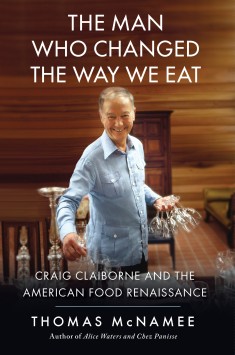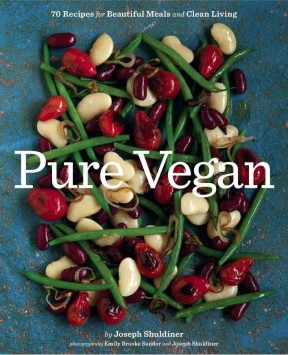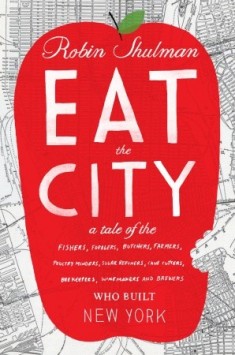Street VeganRecipes and Dispatches from The Cinnamon Snail Food Truck
Meatless meals revamped by the Cinnamon Snail, the vegan food truck with a cult following. In all kinds of weather, vegetarians, vegans, and omnivores alike queue up for addictive vegan cuisine from truck owner Adam Sobel.
What’s the secret behind the Snail’s takeover of New York City streets? In all kinds of weather, vegetarians, vegans, and omnivores alike queue up for addictive vegan cuisine from truck owner Adam Sobel. Now Adam brings his food straight to your kitchen, along with stories of the challenges of working on a food truck while still finding ways to infuse food with imagination, love, and a pinch of perspective. Street Vegan brings the energy and passion of the Cinnamon Snail’s
Adam Sobel is the chef and owner of the four-time Vendy Award-winning vegan food truck the Cinnamon Snail. He has appeared on Food Network and PBS and has written about vegan food for Vegetarian Times. He teaches vegan cooking classes at the Institute for Culinary Education in New York. When he’s not in the city, he and his vegan family can be found in Red Bank, New Jersey–usually practicing yoga and snuggling with their doggies.
The Cinemon Snail, the four time Vendy Award winning food truck bills its self as “The Country’s most raunchy mobile Vegan Organic restaurant!”. With a description like that we just had to talk with founder Adam Sabel.about Street Vegan his new book that is all about his popular food truck.
BAF: What is the Cinnamon Snail?
Adam Sobel: We’re a vegan-organic food truck. We’ve won kind of an uncanny number of awards. Yeah, we serve New York and New Jersey and have kind of pioneered this style of very bold, extra-flavorful vegan foods.
BAF: It seems like you’re trying to turn the world vegan one donut at a time.
Adam Sobel: Yeah. That’s right. It’s kind of a gateway drug.
BAF: Is that the overall philosophy of what you do?
Adam Sobel: Yeah. The food is very much vegan that’s designed to be very appealing to people who are not vegan and don’t particularly care about veganism as an ethical issue. It’s food that’s kind of just very decadent and flavorful and at the same time is not junk foody, either.
BAF: There seems to be a lot of love goes on behind the scenes there. It seems like you guys have a lot of fun with what you do.
Adam Sobel: Yeah. I wouldn’t do it otherwise. We definitely enjoy it. It’s very gratifying work. People come up to you all day and get real happy in front of you and leave. It’s hard work for sure, but it’s very gratifying and fun.
BAF: How did this book come about?
Adam Sobel: Well, very coincidentally, like really not on purpose, we had been parking in front of Random House every Wednesday for years and had kind of a huge fan base in that building. There’s a bunch of publishers right around that area, too. I’d been working on a book kind of on the back burner for awhile and yeah, eventually pitched it to a couple different publishers.
It got bid on by a few different publishers. We decided to go with Clarkson Potter. They were actually outbid by some other publishers, I just felt their books really look great. They do a good job of the design end of the books and for cookbooks I think they were a great choice. Our editor kicked ass to work with and because so many of the people in Clarkson Potter were already enthusiastic fans of our food, they really cared about it and put great energy into it.
BAF: Was it tough to write a book?
Adam Sobel: Yeah. It’s kind of like a big homework assignment or something. I guess a lot of chefs end up working with writers to help them do the book, but I really wanted to personally also, tell a lot of the stories of what it’s like operating a food truck in New York and all of the adventures and difficulties of it. Yeah, doing a book really in addition to recipes gave me the opportunity to share some of those stories, which was something I really wanted to do.
BAF: Was that hard to encapsulate onto a page, into the written word?
Adam Sobel: Yeah. I guess it came pretty naturally to me to write it. Because of the innate shadiness of the food truck permitting world in New York City there were many things I couldn’t even really write about legally. That was kind of an interesting challenge I guess, but that was the easy part. More getting the recipes that work on the truck that we do in humungous volumes to work in regular home kitchens. That took a little bit more kind of re-engineering some of the recipes and getting them very well tested.
BAF: What’s your background prior to the food truck?
Adam Sobel: I worked in restaurants my whole life and I kind of grew up in the publishing world. My parents are both literary agents.
BAF: How did that evolve into the actual truck itself?
Adam Sobel: Well, I’d wanted to do a food truck for years, especially to bring vegan food onto the street where people who had otherwise never walked into a vegan restaurant could check it out and be enticed by the yummy looking pastries and the long line down the block, et cetera. Yeah, I’d been working at a restaurant for about 5 or 6 years, then it very abruptly closed after it changed hands and I was closing on a house that week.
Had to get onto the next thing and my wife and I did some private cheffing in a farmer’s market stand and in about a year we had saved up enough money for the most beat-up truck on all of Craigslist, which we turned into our food truck.
BAF: Was it a challenge transitioning from a regular kitchen to the confines of a food truck?
Adam Sobel: Yeah, it’s a little different, but I’m always up for a challenge in cooking. It’s not the hugest challenge I’ve ever faced.
BAF: Where can people find you? How can they find out where you’re going to be?
Adam Sobel: Now it’s a little bit tricky. We’re no longer operating the truck every single day in the city. There was a time we had a couple of trucks out every single day and now we’re really just running the trucks at events here and there. We’re very good about updating our social media for that, on Facebook and Twitter.
BAF: You were based primarily in Jersey?
Adam Sobel: Yeah, yeah. In the first couple years, we had a kitchen in Jersey and we would actually commute all the way to and from Manhattan everyday. We built a big kitchen in Brooklyn and dispatched the trucks from there every day.
BAF: Are people surprised that there’s actually a vegan truck out there? Because when you think of food trucks, you don’t think vegan. It doesn’t come to mind right away.
Adam Sobel: Yeah. I think we’ve done a lot to change that perception, though. We’ve gained a lot of national and international notoriety for what we do and I think it’s really helped put vegan food on the street food map a lot more. When we started, we were the first vegan-organic food truck in the country and since then there’s been dozens that have popped up.
BAF: What’s next for you?
Adam Sobel: For now the book just hit the shelves. It’s been pretty exciting.
Copyright 2015 Booksaboutfood.com
“I’ve never loved waiting in line so much. You always know at the end of it there’s gonna be seitan, doughnuts, and laughs. And now we don’t even have to wait—we can make those killer sandwiches in our own homes!”
—Isa Chandra Moskowitz, author of Isa Does It
“Adam’s unique, crazy, and genius take on vegan food makes both omnivores and herbivores stand up and cheer!”
—Chloe Coscarelli, author of Chloe’s Vegan Italian Kitchen
Cinnamon Snails
Shredded Root Vegetable Hash Browns with Fig Olive Tapenade![]()
Cinnamon Snails
These are our classic breakfast buns and the buns for which our truck is named. Cinnamon buns have a spiral, snail-shell shape to them, which is why some people call them cinnamon snails. People ask us so frequently about the truck’s name. The truth is, we used to make these pastries for the farmer’s market before we started the truck, and we thought the name was cute. That’s pretty much the whole story . . . But then a Sasquatch snatched up all the puppies, and we had to save the day by riding on a giant cybernetic snail dousing the bad-guy Sasquatch with cinnamon, until he stopped being mean and did a lot of giggling, and we all ate cupcakes, and yayyyy!
Makes 12
Vegetable oil, for greasing the pan
All-purpose flour, for rolling the dough
1 batch of Master Raised Dough (page 229)
½ cup melted vegan margarine (such as Earth Balance)
¼ cup evaporated cane juice
¼ cup ground cinnamon
½ cups Vanilla Glaze (recipe follows)
1. Line a baking sheet with parchment paper and lightly oil the paper with vegetable oil.
2. On a floured work surface, roll the dough out into a rectangle ½ inch thick by 16 inches wide by 20 inches long. Brush the surface of the rectangle with the melted margarine. Sprinkle the evaporated cane juice and cinnamon evenly over the surface of the rectangle. Starting at the edge closest to you, evenly roll up the rectangle into a cylinder approximately 3½ inches in diameter.
3. Cut the roll crosswise into ¾-inch-thick slices. Place the slices at least 1½ inches apart on the baking sheet2½ cups Vanilla Glaze (page 230) and allow to proof in a warm, humid environment for 15 to 30 minutes, until they have puffed to almost twice their original height.
4. Preheat the oven to 350°F.
5. Bake the proofed buns for 15 to 18 minutes, until lightly golden brown and no longer doughy to the touch. While still warm, brush the buns with 3 to 4 tablespoons of glaze apiece. Cinnamon snails are best if served warm and fresh from the oven, but they can be gently brought back to life if reheated in a toaster oven or in a covered skillet over low heat.
Vanilla Glaze
This is the white glaze we use on our Vanilla-Bourbon Crème Brûlée Donuts (page 246), Cinnamon Snails (page 233), plain glazed donuts, and so many other yummy treats. This is a nice, simple recipe that you can tweak into any kooky glaze idea you fancy by adding flavors to it, or by changing the liquid (try replacing the soy milk with an equal amount of apple cider, flavorful tea, coconut milk, or whatever you love the most).
¾ cup unsweetened soy milk
1¼ teaspoons pure vanilla extract, or ½ teaspoon vanilla beans
6 cups vegan powdered sugar
In the bowl of a stand mixer fitted with the whisk attachment, combine the soy milk, vanilla, and powdered sugar and whisk until smooth. Use immediately, or store in an airtight container in the refrigerator for up to 3 weeks. Before using, gently warm in a double boiler to just above room temperature.![]()
Shredded Root Vegetable Hash Browns with Fig Olive Tapenade
Damn straight—you can have things like parsnips, turnips, and celery root for breakfast. They are starchy, so they have a lot in common with the humble potato (and when I say humble, I mean, it’s also the best thing in the world). But unlike potatoes, these root veggies are super-flavorful, and probably also a lot better for you. The tapenade, which is just slightly sweet from the figs and balsamic, really kicks them into high gear. You wouldn’t think so, but figs and olives are a match made in heaven, and they come together with a sophisticated savory sweetness.
Serves 4
For the fig olive tapenade
3 tablespoons balsamic vinegar
¼ cup dry red wine
¼ cup chopped dried figs
¾ cup pitted kalamata olives
2 tablespoons extra-virgin olive oil
For the hash browns
1 large parsnip, peeled
1 medium turnip, peeled
½ medium celery root, peeled
1 large russet potato, peeled
2 garlic cloves, minced
2 tablespoons chopped fresh rosemary leaves, plus whole sprigs for garnish
1 teaspoon paprika
½ teaspoon sea salt
3 tablespoons extra-virgin olive oil
1 Make the tapenade: Bring the vinegar, wine, and figs to a boil in a small saucepan over high heat. Cover the pot, turn off the heat, and allow the figs to steam and soften for 10 minutes. Pour the contents of the pot into a food processor along with the olives and oil, and process for 3 minutes until a fairly smooth tapenade is formed. The tapenade will keep in an airtight container in the refrigerator for up to a week.
2 Make the hash browns: Shred the parsnip, turnip, celery root, and potato with either a grater or a food processor equipped with a shredding blade. Place the shredded vegetables into a bowl with 4 cups cold water, and massage them by hand, squeezing out the extra starch. Allow the vegetables to sit in the water for 5 minutes. Drain the vegetables in a colander, and rinse them off under cold running water. Allow the vegetables to dry as much as possible, squeezing out extra liquid through the colander. Transfer the drained vegetables to a small bowl, and mix in the garlic, chopped rosemary, paprika, and salt.
3 Heat the olive oil in a large skillet or frying pan over medium-high heat. Once the oil is hot, scatter the shredded vegetables evenly over the surface of the pan. Allow them to fry and brown on the first side for about 3 minutes. Start flipping around the shredded vegetables every 2 minutes or so, so that after about 15 minutes, all sides are nicely browned and there are no remaining pockets of uncooked vegetables.
4 Serve with the tapenade on the side in a small ramekin, and garnish if desired with fresh sprigs of rosemary.











Leave a Reply